Gaza Culture Will Not Be Erased
Posted in: Days of Observance, Society & culture
If I must die,
you must live
to tell my story
to sell my things
to buy a piece of cloth
and some strings,
(make it white with a long tail)
so that a child, somewhere in Gaza
while looking heaven in the eye
awaiting his dad who left in a blaze—
and bid no one farewell
not even to his flesh
not even to himself—
sees the kite, my kite you made, flying up bove
and thinks for a moment an angel is there
bringing back love
If I must die,
let it bring hope
let it be a tale.
— Refaat Alareer
When Raafat was under siege and constant bombardment, he gave us stories and poetry to help keep the culture of Gaza alive. A professor, a father, and a truth-teller, Refaat Alareer was killed in December 2023. His words live on – not only in ink and memory, but in the collective struggle of a people fighting not only for survival, but for the right to exist with dignity, with history, and with culture.
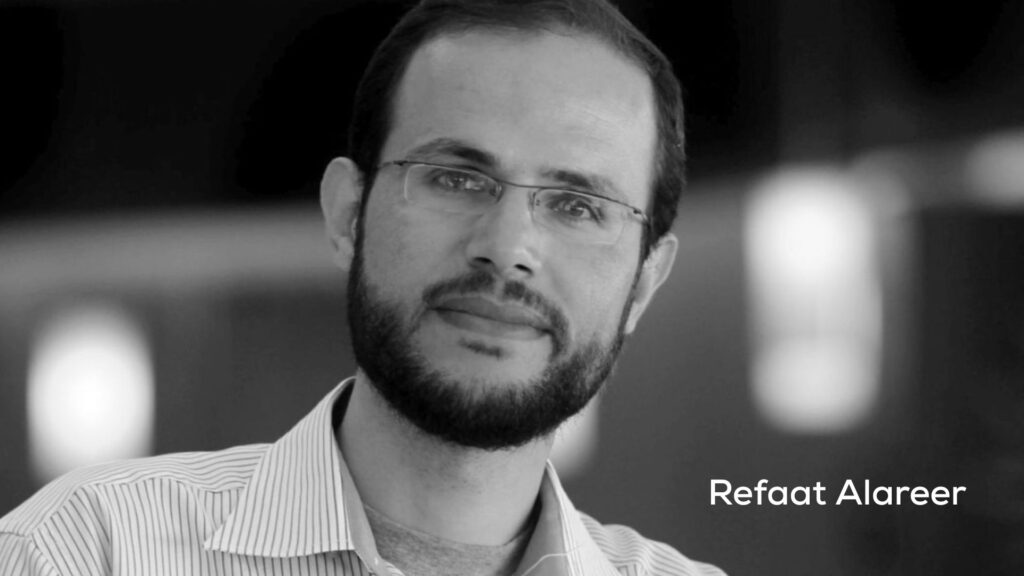

For the past eighteen months, I have been holding meetings and sessions to talk about how the war on Gaza has affected our people. Now, I want to speak not just about buildings reduced to rubble or numbers reported in the news. I want to speak about the erasure of stories, the silencing of songs, the destruction of art, books, and stages. About how this war is not just a war on people – it is a war on meaning. A war on culture.
What we know so far… Out of 50,000 people killed in Gaza, some 30 visual artists, 20 writers,10 musicians and 58 performing artists have died because of the war. In terms of physical spaces, 30 cultural institutions have been destroyed or damaged, as well as 87 libraries and 8 publishing houses.
These are not just statistics. Each name lost was a storyteller of Palestine. Each library held the memories of generations. Each theater was a place where children found self expression and joy.
And still, despite everything, artists in Gaza continue to create.
Mohammed Alhaj, a painter from Gaza, lost his home and studio. Displaced, he now paints on flour sacks and aid boxes. His palette is made of what remains after the bombs. His art, a quiet act of defiance that says we are still here.
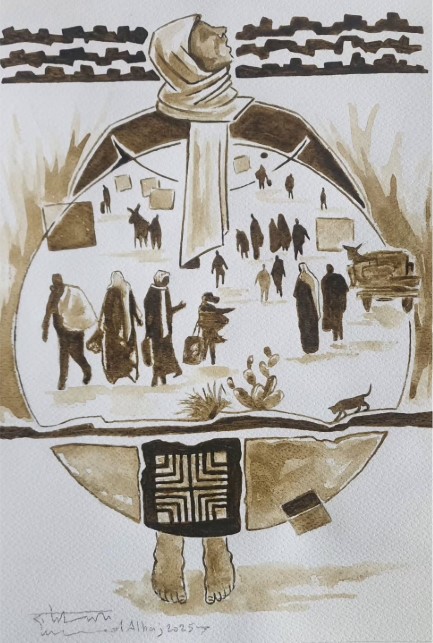

Artists like Hussein al-Jerjawi and Ibrahim Mahna show us that creativity does not end when the supplies run out – it adapts, it endures. Their work mourns, resists, remembers. The Palestinian cultural legacy is endurance through fragmentation.
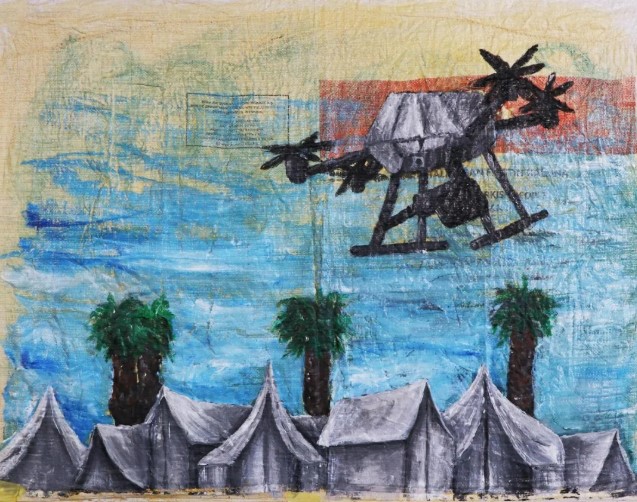

Sadly, many artists have had no choice but to flee.
Motaz Naim is now in Egypt.
Mohammed Al Hawajri lives in Sharjah.
Shareef Sarhan has found refuge in France.
And Malak Mattar, a brilliant young painter, left Gaza for London one day before the war began. Today, her work is stripped of color. Her latest piece, No Words, was exhibited alongside the 60th Venice Biennale. It tells a story of grief too vast for language – and of a people whose art needs no permission to be part of the global conversation. It already is.
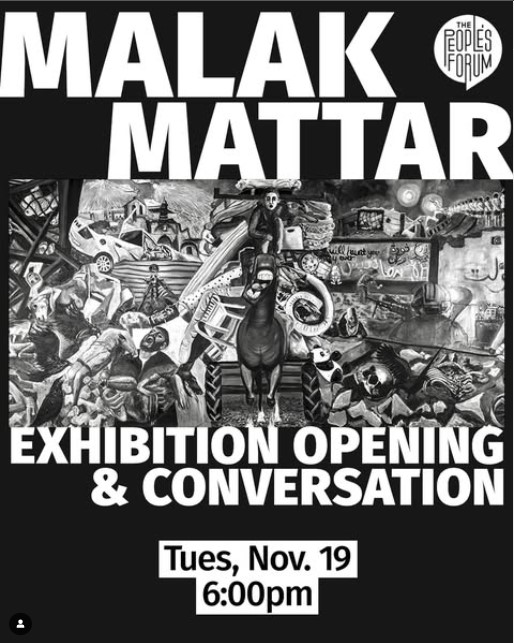

In the West Bank, the toll is quieter, but still very heavy.
Celebrated artist Sliman Mansour speaks of a deep stagnation. Past uprisings ignited artistic movements. But today’s horrors have left many people feeling numb.
Others continue on regardless. Haya Kaabneh still teaches art in Jericho, even though she isn’t paid. With PA salaries suspended and funds withheld, many artists sell their work just to survive. Art has become both protest and sustenance.
For Palestinian performers – musicians, actors, dancers – the weight is unbearable. Guilt, censorship and grief loom over every choice. How do you sing when your people are being buried beneath silence?
This is not collateral damage. This is cultural warfare. It is the targeted erasure of a people’s ability to narrate themselves.
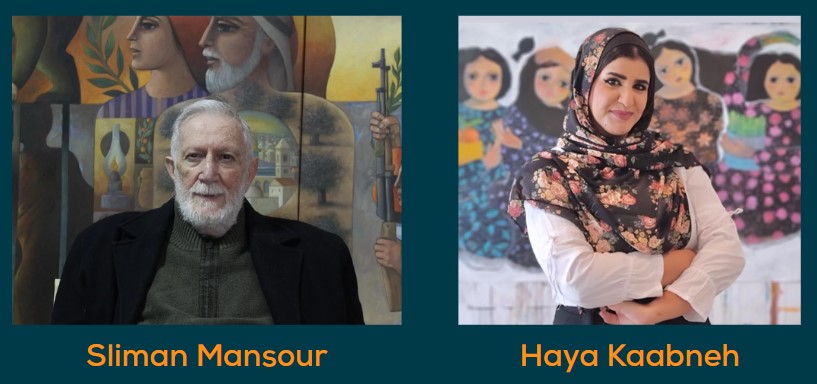

And yet – people are listening to Palestinian Artists.
Around the world, there is a renewed hunger for Palestinian art. Galleries are selling out of prints. Poetry from Gaza is being shared widely. Resistance art is hung on walls, recited in classrooms, sung in protest.
The struggle continues – not just in shelters and hospitals – but in studios, kitchens, concert halls and classrooms.
We must protect this. Because culture is not a luxury. It is survival. It is identity. It is how people continue when the world looks away. So let us not look away.
Let us remember Refaat’s words:
If I must die,
let it bring hope,
let it be a tale.
This is my call to action for all of you on this #WorldArtDay.
Seek out the voices that refuse to be erased. Follow Palestinian artists on social media. Listen to their stories. Share their work. Look for exhibits in your own community and make space for them where there is none. Buy their art. Teach their poetry. Hum their songs.
Because when you support Palestinian culture, you are helping preserve a people’s story. You are affirming that their dreams, their memories, their resistance, and their joy matter.
Let us lift their kites into the sky. Let’ u’s ensure their stories are not only remembered – but continue to be told.
OUR BLOG
Related
In this log, Anera provides updates on unfolding war in Palestine and our response. Please stay tuned here for the latest information. Questions? See our FAQ page April 15, 2025 Today, our Americares-supported health clinics program provided care for 221…
I was born in New Haven, Connecticut, where most of my family is from. My mother grew up in a predominantly Muslim community where I ended up working years later, teaching children and adults through special education. I’ve been aware…
From maternal care to mental health, here’s some insight into women’s health in 2025. Today, women’s health is shaped by a range of overlapping challenges – from conflict and poverty to climate change and systemic inequality. While there…
